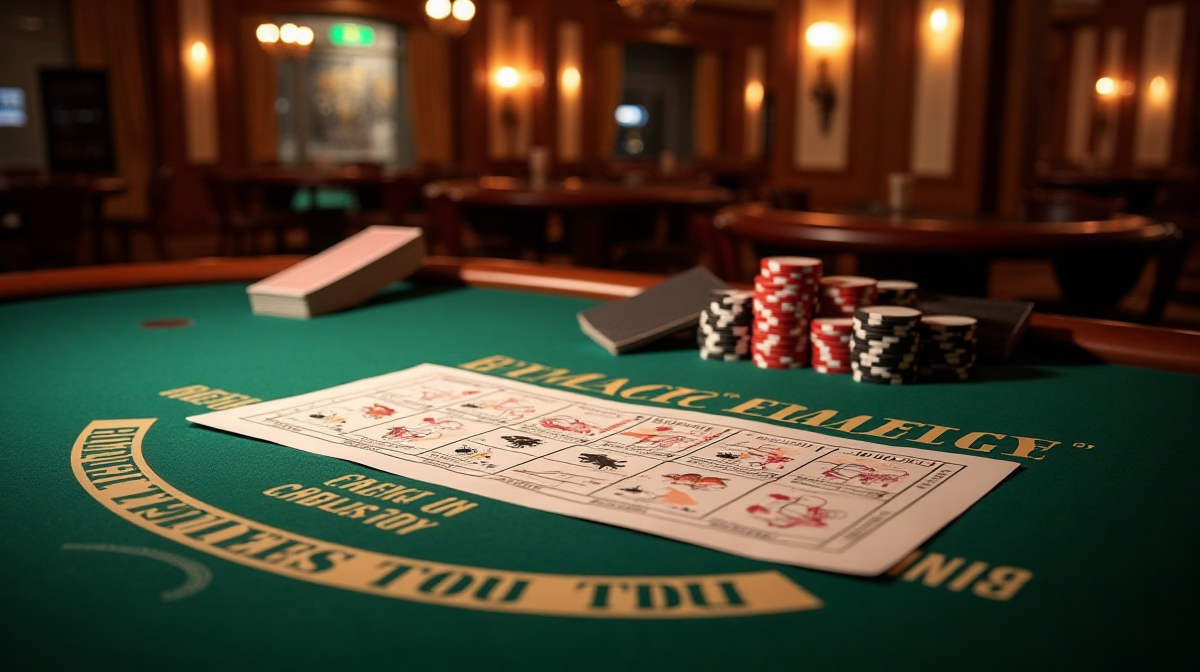Blackjack Basic Strategy: Become a Pro
What is Blackjack? – A Quick Overview
Blackjack, also known as 21, is a casino game where players compete against the dealer to get a hand value as close to 21 as possible without exceeding it. It's a game of skill and chance, and mastering the basics can significantly improve your odds. Many online platforms, like betfuse, offer various blackjack games.
Why Use Basic Strategy? – The Math Behind Winning
While luck plays a role, blackjack is fundamentally a mathematical game. Basic strategy is a mathematically derived set of plays that tells you the optimal action to take in every possible situation. Using it reduces the house edge to its minimum, giving you the best possible chance of winning. Some players even search for betfuse prediction tomorrow sure wins, but understanding and applying basic strategy is a far more reliable path to success.
Understanding Key Terminology
Before diving into strategy, let's define some key terms: Hit (take another card), Stand (end your turn), Double Down (double your bet and take one more card), Split (separate a pair into two hands), and Surrender (forfeit your hand and receive half your bet back – not always available).
Dispelling Blackjack Myths
Many misconceptions surround blackjack. It's not about feeling lucky or predicting the next card. It's about making informed decisions based on probability. Forget counting cards right away; focus on mastering basic strategy first.
Decoding the Chart: Understanding Rows & Columns
The basic strategy chart is your essential tool. It’s organized with your hand total on one axis and the dealer’s upcard on the other. Each cell indicates the optimal action – Hit, Stand, Double Down, or Split.
How to Read the Chart – Practical Examples
For example, if you have a hard 16 and the dealer shows a 7, the chart will tell you to Hit. If you have a hard 12 and the dealer shows a 4, 5, or 6, the chart will tell you to Stand. Understanding these guidelines is crucial.
Where to Find Reliable Basic Strategy Charts
Numerous resources online provide basic strategy charts. Ensure you choose one specifically tailored to the rules of the game you’re playing (e.g., dealer hits or stands on soft 17). A quick search for resources alongside blackjack basic strategy will yield many options.
Memorizing the Chart – Techniques & Resources
Memorization takes time and practice. Flashcards, online trainers, and repeatedly using the chart during gameplay are effective methods. Don't be discouraged if it feels overwhelming initially.
Hard 9, 10 & 11: When to Hit, Stand, or Double Down
With a hard 9, always hit. With a hard 10, double down against dealer 2-9, otherwise hit. With a hard 11, always double down unless the dealer shows an Ace.
Hard 12-16: The Tricky Zone
These totals are the most challenging. Your decision heavily depends on the dealer’s upcard. Generally, you’ll stand against lower dealer cards (2-6) and hit against higher cards (7-Ace).
Hard 17 and Higher: Always Standing
Once you reach 17 or higher, always stand. The risk of busting is too high.
Common Mistakes with Hard Totals
A common mistake is hitting on 17. Resist the urge! Following the chart consistently is key.
What are Soft Totals? Understanding Ace Valuation
Soft totals include an Ace counted as 11. This allows for flexibility, as the Ace can become a 1 if needed to avoid busting.
Soft 13-18: Doubling Down Opportunities
Soft totals offer numerous doubling down opportunities. For example, soft 13-18 should be doubled down against dealer 5 and 6.
Soft 19-21: Always Stand or Double Down?
Soft 19-21 are strong hands. Generally, you'll stand unless the dealer shows a low card (2-6), in which case you’ll double down.

Adapting to Dealer’s Upcard for Soft Totals
The dealer’s upcard significantly impacts your soft total strategy. Pay close attention to the chart.
Splitting Pairs: Which Pairs to Split & Why
Splitting pairs can be very advantageous. It allows you to play two separate hands, increasing your chances of winning.
Splitting Aces & Eights: Always a Split!
Always split Aces and Eights. This gives you the best opportunity to create strong hands.
Splitting 9s, 10s, and Face Cards
Splitting 9s, 10s, and face cards depends on the dealer’s upcard. Generally, split against dealer 2-6, but stand against 7-Ace.
Splitting 2s, 3s, 7s: The Situations to Avoid Splitting
Avoid splitting 2s, 3s, and 7s. These pairs are unlikely to result in strong hands.
Dealer Hits Soft 17 vs. Dealer Stands on Soft 17
The dealer’s rule on hitting or standing on a soft 17 affects basic strategy. Adjust your chart accordingly.

Late Surrender vs. Early Surrender
Surrender allows you to forfeit your hand and receive half your bet back. Late surrender is offered after the dealer checks for blackjack, while early surrender is before. Utilizing it, when available, can reduce losses.
Impact of Penetration & Card Counting Preparation
Penetration refers to how many cards are dealt from the deck before reshuffling. Lower penetration favors the house. Understanding this helps prepare for potential card counting, though basic strategy is the foundation. Many players find enjoyment and practice on platforms like betfuse, preparing them for more serious play.
Basic Strategy vs. Card Counting
Basic strategy is a stepping stone to card counting. Mastering basic strategy is essential before attempting more advanced techniques.
Free Online Blackjack Games for Strategy Practice
Numerous websites offer blackjack online for free, allowing you to practice basic strategy without risking real money.
Using a Basic Strategy Trainer
Basic strategy trainers provide feedback on your decisions, helping you identify and correct errors.
Maintaining Discipline at the Table
Avoid emotional plays. Stick to the chart, even when you’re losing.
Recognizing and Correcting Common Errors
Regularly review your gameplay and identify areas where you’re deviating from basic strategy.
Introduction to Card Counting
Card counting involves tracking the ratio of high to low cards remaining in the deck to gain an advantage. It’s complex and requires significant practice.
Bankroll Management
Proper bankroll management is crucial for long-term success. Set a budget and stick to it. Consider the opportunities available on platforms such as betfuse registration to manage your funds effectively.
Resources for Further Blackjack Learning
Numerous books, websites, and forums offer in-depth blackjack information. Continue learning and refining your skills.

